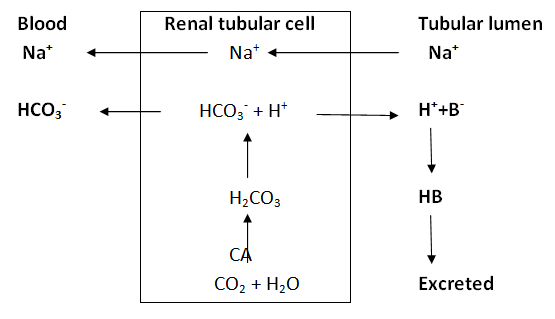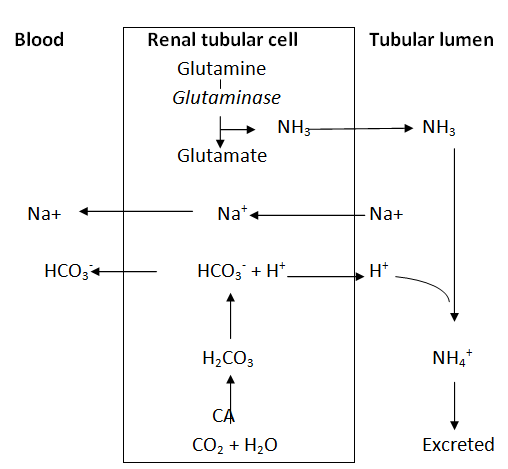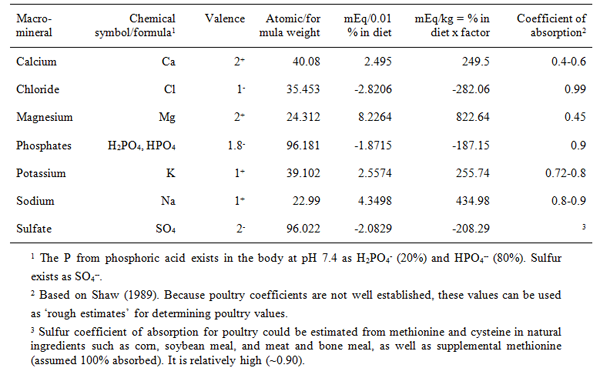热度 2 |||





High ambient temperatures coupled with high humidity can be devastating to commercial broilers. Heat stress interferes with the broiler´s comfort and suppresses productive efficiency. Although increased heat is seen as a major problem in poultry production, studies show that it is not only the excessively high temperatures, but also the fluctuation of the temperature which is more detrimental for a broiler to perform. Heat stress is a significant source of economic loss for the broiler producers worldwide. Increased mortality and depressed feed intake and retarded growth rate associated with heat stress have been well-documented.
As ambient temperature increases, birds start to pant to get rid of the heat load by evaporation. Evaporative heat loss through panting is the most important mechanism to control body temperature under heat stress. However, panting is accompanied with increases in respiratory rates. The increased respiratory rate causes higher losses of CO2 and results in increased blood pH and disruption of acid-base balance (Toyomizu et al., 2005). When this balance is altered towards alkalosis or acidosis, metabolic pathways are diverted to homeostatic regulation rather than used for supporting growth. Moreover, under heat stress, birds lose more water (through panting and urine) than they do when they are in the thermal comfort zone. A decrease in body water results in a reduced ability to dissipate heat via evaporation and through increased peripheral blood flow. As a consequence, birds increase water consumption to compensate for water loss and to increase the heat dissipation capacity. However, water retention is reduced due to the increased electrolyte excretion in urine and feces (Belay et al., 1992; Belay and Teeter, 1996). Reductions in intracellular water adds further stress to the bird and understanding how this can be minimized will facilitate identification of effective dietary and management treatments.
Electrolytes
Electrolytes are chemical substances that separate, when dissolved in fluids, into electrically charged particles (ions) capable of conducting electric currents vital for the function of nerves and muscles.
The major cations (positively charged electrolytes) in the body´s fluid are sodium, potassium, calcium, and magnesium. The major anions (negatively charged electrolytes) are chloride, phosphate, sulfate, and bicarbonate. Organic acids such as lactate, pyruvate, and aceto-acetate also carry negative ions.
Calcium is the most abundant electrolyte in the body. About 99 percent of calcium is stored in the teeth and bones where it helps to make and keep them strong. Moreover, calcium is also critical for muscle contraction, nerve signaling, blood clotting and maintaining normal heart function. Normal serum calcium values range from 8.5 to 10.2 mg/dL.
Sodium is the major extracellular cation. It regulates the total amount of water in the body and plays a major role in neuronal and nerve signaling. Normal serum sodium values range from 135 to 145 mEq/L. Potassium is the major intracellular cation.
Potassium is essential for the proper functioning of the heart, kidneys, muscles, nerves, and digestive system. The normal blood potassium level is 3.5 to 5.0 mEq/L.
Phosphate makes up one percent of a person´s total body weight. A majority of the body´s phosphate is found in the bones and teeth where it promotes their formation. It also plays an important role in the body´s utilization of carbohydrates and fats. Phosphates are also critical to the synthesis of proteins that promote the growth, maintenance, and repair of cells and tissues. Normal values range from 2.4 to 4.1 mg/dL.
Chloride is the major extracellular anion found outside the cell. Chloride plays a critical role in keeping the proper balance of body fluids and maintaining the body´s acid-base balance. The normal chloride values are 96 to 106 mEq/L.
Magnesium is the fourth most abundant mineral in the body. Half of the body´s magnesium is found in the bone and the other half is found mainly with in the cells of body tissues and organs. Magnesium is needed for more than 300 biochemical reactions in the body. It helps maintain normal muscle and nerve function, keeps the heart rhythm steady, supports a healthy immune system, and keeps bones strong. Magnesium also helps regulate blood sugar levels, promotes normal blood pressure, and is also involved in energy metabolism. Normal serum values of magnesium are 1.7 to 2.2 mg/dL.
General functions of electrolytes
Acid-Base Balance
The body has three lines of defense to regulate the body´s acid-base balance and maintain the blood pH around 7.4 viz.
Blood buffers
A buffer may be defined as a solution of weak acid (HA) and its salts (BA) with a strong base. The buffer resists the change in pH by the addition of acid or alkali and the buffering capacity is dependent on the absolute concentration of the salt and the acid. Buffer cannot remove H+ ions from the body rather it acts as a temporary shock absorbent to reduce the free H+ ions. The H+ ions have to be ultimately eliminated by the renal mechanism. The blood contains 3 buffer systems viz.
Respiratory mechanism controlling electrolyte balance
This is achieved by regulating the concentration of carbonic acid in the blood. i.e the denominator in the bicarbonate buffer system. The large volumes of CO2 produced by the cellular metabolic activity endanger the acid-base equilibrium of the body. But in normal circumstances, all of this CO2 is eliminated from the body in the expired air via the lungs.

The rate of respiration (or the rate of removal of CO2) is controlled by a respiratory centre, located in the medulla of the brain. This centre is highly sensitive to changes in the pH of blood. Any decrease in blood pH causes hyperventilation to blow off the CO2, thereby reducing the H2CO3 concentration. Simultaneously, the H+ ions are eliminated as H2O.
Renal mechanism for pH regulation
This involves
Excretion of H+ ions: H+ excretion occurs in the proximal convoluted tubules (renal tubular cells) and is coupled with the regeneration of HCO3- (Fig 1).
Fig 1. Renal regulation of blood pH-Excretion of H+ ions (CA- Carbonic anhydrase)

Reabsorption of bicarbonate: This mechanism is primarily responsible to conserve the blood HCO3-, with a simultaneous excretion of H+ ions. The normal urine is almost free from HCO3- (Fig 2).
Fig 2. Renal regulation of blood pH- Reabsorption of bicarbonate (CA – Carbonic anhydrase)

Excretion of titratable acid: Titratable acidity is a measure of acid excreted into urine by the kidneys. Titratable acidity reflects the H+ ions excreted into urine which resulted in a fall of pH from 7.4 (that of blood). The excreted H+ ions are actually buffered in the urine by phosphate buffer as depicted in Fig 3.
Fig 3. Excretion of titrable acid

Excretion of ammonium ions: This is another mechanism to buffer the H+ ions secreted into the tubular fluid. The H+ ion combines with NH3 to form ammonium ion (NH4+). The renal tubular cells de-aminate glutamine to glutamate and NH3 is produced. This reaction is catalyzed by the enzyme glutaminase. The NH3, liberated in this reaction diffuses into the tubular lumen where it combines with H+ to form NH4+. Ammonium ions cannot diffuse back into tubular cells and, therefore, are excreted into urine. This is explained in Fig 4.
Fig 4. Renal regulation of blood pH- Excretion of ammonium ions (CA- Carbonic anhydrase)

Sodium-potassium pump
The pump, with bound ATP, binds 3 intracellular Na+ ions. ATP is hydrolyzed, leading to phosphorylation of the pump at a highly conserved aspartate residue and subsequent release of ADP. A conformational change in the pump exposes the Na+ ions to the outside. The phosphorylated form of the pump has a low affinity for sodium ions, so they are released. The pump binds 2 extracellular K+ ions, leading to the dephosphorylation of the pump.ATP binds, and the pump reorients to release potassium ions inside the cell so the pump is ready to go again. As the plasma membrane is far less permeable to sodium than it is to potassium ions, an electric potential (negative intracellularly) is the eventual result.The electrical and concentration gradient established by the sodium-potassium ATPase supports not only the cell resting potential but the action potentials of nerves and muscles. Export of sodium from the cell provides the driving force for several facilitated transporters, which import glucose, amino acids and other nutrients into the cell. Translocation of sodium from one side of an epithelium to the other side creates an osmotic gradient that drives the absorption of water. Another important task of the Na+-K+ pump is to provide a Na+ gradient that is used by certain carrier processes. In the gut, for example, sodium is transported out of the resorbing cell on the blood side via the Na+-K+ pump, whereas, on the resorbing side, the Na+-Glucose symporter uses the created Na+ gradient as a source of energy to import both Na+ and Glucose, which is far more efficient than simple diffusion. Similar processes are located in the renal tubular system.
Heat stress in broiler and dietary electrolyte balance
Heat stress occurs when heat accumulation from metabolism and the environment exceeds the ability of the bird to lose heat. In response, the bird increases its respiration rate ("panting") so as to increase evaporative cooling from the respiratory tract. This panting can result in the development of respiratory alkalosis and a reduction in blood bicarbonate (HCO3–) concentrations. In addition to elevated blood pH, plasma electrolyte concentrations are altered. Attempts to limit the adverse effects of heat stress through nutritional means have included the manipulation of the mineral content of feed and water. The objectives have been to increase water intake and, therefore, improve the efficiency of heat dissipation from the respiratory tract, and to increase the intake of certain minerals to restore plasma electrolyte concentrations to normal levels. Heat stress also depletes K+ and other minerals in the body, altering the delicate electrolyte balance in the body.
The electrolyte balance in birds is altered during heat stress due to panting. By adding electrolytes to the feed or water, birds increase their water intake, which aids in keeping a constant body temperature and maintains an effective system of evaporative cooling. DEB of 250mEq has been shown to be required for optimal productive metabolism in chickens (Mongin, 1981; Borges et al., 2003). The value of dietary electrolyte balance (DEB), defined as the concentrations of [(Na+) + (K+) – (Cl–)] in mEq/kg, as a practical predictor of growth in poultry is unresolved. Mongin (1981) indicated that growth is optimized when the DEB is 250 mEq/kg but the usefulness of the equation for predicting the growth of birds, especially during heat stress, is questionable (Gorman and Balnave, 1994). A number of factors should be considered.
DEB formulation and level of inclusion
An example of DEB calculation based on total levels of monovalent minerals in a theoretical broiler prestarter feed using salts (to give 0.25% total Cl) and sodium bicarbonate (0.3%) is given here:
Sodium (Na) 0.28% x 434.98 factor = 121.79 mEq/kg
Potassium (K) 0.75% x 255.74 factor = 191.80mEq/kg
Chloride (Cl) 0.25% x -282.06 factor = -70.51 mEq/kg
DEB = 243.08 mEq/kg
Murakami et al. (1997) reported that Na+ requirement of broiler was no more than 0.20% up to d21 and not more than 0.15% on 42-56 day of age. They also reported that Cl- level higher than 0.20% was of no benefit. Rondon et al. (2001) reported that the Na+ and Cl- requirements for optimum performance of young broiler chickens were 0.28% and 0.25% respectively. Borges et al. (2003a) found that in thermo- neutral room DEB 240mEq increased 42d weight gain & 44d lymphocyte % and DEB 240mEq treatment significantly increased 0-21d wt. gain compared to DEB 40,140 and 340 mEq. Borges et al. (2003b) reported that under moderately high ambient temperature blood HCO3 and pH increased with DEB 360mEq/kg causing respiratory alkalosis but DEB of 240mEq/kg gave best wt gain and FCR. Olanrewaju et al. (2007) used 174mEq & 241mEq DEB and 8IU of ACTH in saline/kgBW & same vol. of saline were injected per day for 7d on d35. Birds fed 241mEq exhibit significantly higher Na+ and Ca2+ levels than the other on d35. They also reported that infusion of ACTH significantly increased hematocrit, Hb, pCO2, corticosterone, osmolality and HCO3-. Reduced pH, body weight, pO2 and plasma Na+ and Cl- in both diets compared with control group at 42 and 49 d of age. Babiker et al. (2009) conducted experiment on IBD vaccinated birds with diets having only basal diet and basal diet supplemented with electrolytes and vitamins. Reduced mortality from 40-24% and increased bursa to body wt, lower pathological change of bursal tissue and mean antibodies titre elevation were observed in diet supplemented with electrolytes and vitamins. Adekunmisi and Robbins (2009) reported that for a diets containing 14.3%, 21.4% and 28.6% CP the optimum DEB were approx. 250 mEq, 325 mEq and 400 mEq/kg and they concluded that the optimum dietary electrolyte balance of broiler chicks is dependent on diet crude protein content. Raymond and Hector (2012) reported an optimum electrolyte balance from 250-300mEq/kg and high dietary Ca reduced plasma inorganic P levels.
Table 1. Convenient factors, and their derivation, for calculating dietary electrolyte balance (DEB) based on the total levels of macro-minerals in diet

Summary
The most important factor affecting performance in broilers subjected to high temperature is reduced feed intake. High temperature accompanied by high humidity is more detrimental to broiler performance than high temperature with low humidity. Nutritional manipulation such as the addition of fat and reduction of excess protein are recommended. During hot periods, lower protein diets supplemented with limiting amino acids give better results than high protein diets. Maintenance of both CO2 and blood pH is critical to heat-stressed broilers and the addition of ammonium chloride and potassium chloride to the drinking water to maintain this balance is advised.
Full list of reference is available on request